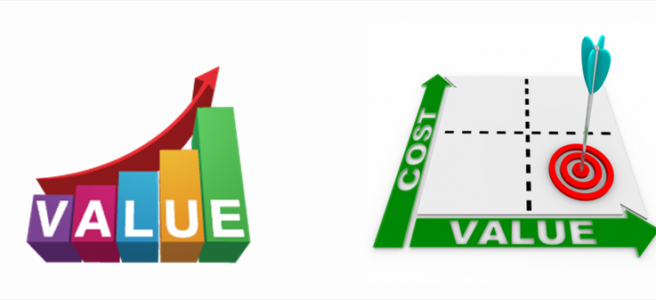In the last post we explored a problem of plenty. There are so many frameworks available to us that is it is easy to get confused about which one to use. This is not a trivial problem because organisations often spend a lot of time and money implementing such frameworks, only to find that things didn’t work out as they had hoped. There are many possible reasons for this (organisations are complex adaptive systems after all!). But what if the reason most of these efforts fail is that the framework they picked wasn’t the right one for them? If that’s the case then any attempt to find the right framework would be well worth the effort.
When we placed Economic Value Added (EVA) and Business Performance Management (BPM) alongside each other last week, we were able to see that EVA could serve a purpose within the broader BPM framework, i.e. it could be the means to establish expectations of the investor as stakeholder and convert these expectations into a long-term strategic objective.
If we accept BPM as an umbrella framework and EVA as one of the subsidiary frameworks, then the next reasonable question would be whether it is possible to identify a set of such subsidiary frameworks for other key stakeholders. As it turns out, a framework for the customer-as-stakeholder was proposed several decades ago but never did make it into the mainstream. The framework is called, unsurprisingly, Customer Value Added (CVA). Let’s take a closer look at CVA.
The product or service that an organisation offers to its prospective customer can be unpacked into a set features that meet a set of the customer’s needs. Let’s take a simple example. When buying a widget, a very rational customer might place a lot of value, perhaps 90%, on functionality and a little, perhaps 10%, on its ‘cool factor’ (the opposite of why a customer might choose a luxury brand). To obtain this value by buying the product, the customer would pay a price over the lifetime of their using the product, the Total Cost of Owning it (TCO).
If the features of our product meet these needs to exactly the same extent as the competition, the value provided to the customer would be identical for both products. But if the functionality of our product is even a little better than that of the competition for an equivalent TCO, the customer would get more value by buying our product. By combining the value the customer gets from our product and its TCO, we can determine a numerical value for the ‘bang for the buck’ our product provides compared to that of the competition. In the CVA framework, this ‘bang for the buck’ is termed Value Added Relative to the Competition (VARC).
In a perfectly rational world if we were to offer a product that provides a higher VARC than the competition, we would be able to extract a higher profit from the customer buying our product than they could. But they would take notice and change their product to increase the VARC by either adding features or reducing the TCO to equalise the disadvantage and increase the profit they extract from their product. The net result over a period of time would be that competitors would position themselves somewhere along a curve representing equivalent VARC. At one end we would have the low value, low TCO products (e.g. the low-cost runabout) and at the other the high value, high TCO products (e.g. the luxury supercar). If we aggregate VARC we provide across all our products across all our customers, we would get a figure that represents the total VARC for us as an organisation.
The sceptical reader might ask whether there is any basis at all in the real world of the validity of this model. Proponents of CVA point to analysis done on a huge database that recorded relevant information obtained from companies over an extended period of time. The Profit Impact of Market Strategy (PIMS) database was started by General Electric in the 1960’s for internal use and extended over the next couple of decades to include other companies. It is still in use, though in private hands today. CVA evangelists claim that analyses conducted on the PIMS database show a correlation between market share and VARC calculated using the model.
The parallel between the arguments put forward by proponents of EVA and CVA is remarkable. EVA helps translate investor expectations into financial performance targets. The correlation isn’t actually perfect. EVA only explains part of the relationship between financial performance and share price. It just happens to be the explanation that provides the best correlation. CVA helps translate customer expectations into product-price performance targets. CVA is also not a perfect correlation. It simply happens to be a very good one, perhaps the best we have. It is easy to see how CVA can be seen as equivalent to EVA.
It is also easy to see where one can go with such frameworks. In the conventional approach, one first articulates a Vision, using one of many frameworks available for this purpose. One then translates the Vision into a set of Strategic Objectives. One way to do this translation is to look at the Vision from the perspective of each stakeholder and articulate that as a ‘Destination Statement’ for that stakeholder. Each Destination Statement can then be translated into a Strategic Objective. But what if one were to do it the other way? We could use frameworks such as EVA and CVA to develop Destination Statements and combine them into a Vision statement.
This raises an interesting question. Do we have such a framework for the third key stakeholder, the employee? Let’s take a look next week.
If you are interested in learning more about organisational alignment, how misalignment can arise and what you can do about it join the community. Along the way, I’ll share some tools and frameworks that might help you improve alignment in your organisation.

